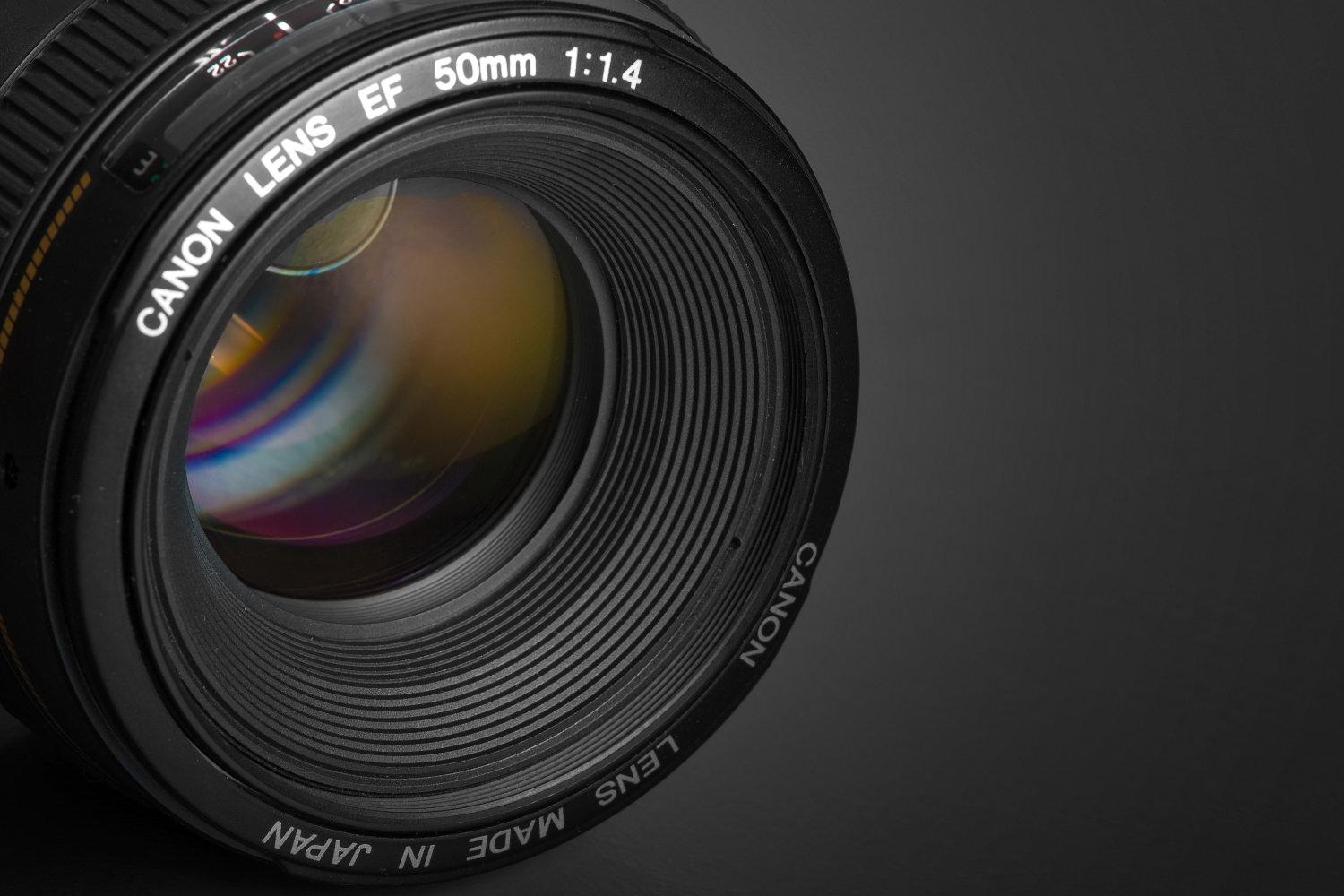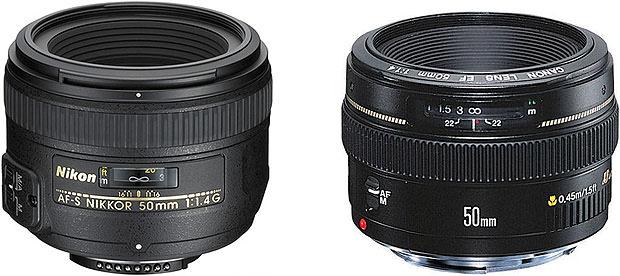A standard lens, also known as a "normal lens", is one which produces an image that roughly matches what the human eye sees, and which looks natural to the viewer. It sits between the telephoto lens and the wide angle lens, which produce unnaturally zoomed-in and zoomed-out images respectively.
Standard lenses have an angle of view of around 50 to 55 degrees diagonally. This is roughly the same as the angle that the human eye can comfortably view, which is why it gives a natural-looking perspective.
Normal lenses make great general-purpose lenses, and can be used to photograph everything from close-up portraits to landscapes. They tend to be very "fast" lenses (i.e. they have a wide aperture), making them great for indoor and low-light photography.
Standard lenses produce a natural perspective which is very close to what the human eye sees.
Focal Length
The technical definition of a standard lens is one whose focal length roughly matches the diagonal or the film or image sensor. For a standard full-frame 35mm camera this gives a focal length of around 43mm.
In reality, the actual focal lengths chosen by manufacturers tend to be slightly longer than this. For a 35mm sensor, 50mm is the most common standard lens, although some companies do sell lenses which are closer to 43mm focal length.
Crop Factor
Because the "ideal" focal length depends on the sensor size, cameras which are less than full-frame will require lenses with shorter focal lengths. For example, a camera with a 1.5x "crop factor" will require a lens which is 1.5 times shorter than the standard 50mm, which works out at 33mm. A number of manufacturers produce 35mm standard lenses to meet this requirement.
Using a 50mm lens on a camera with a less than full-frame sensor will result in the image being cropped. To get the same "standard" effect, use a shorter focal length. Image by Paulo Alegria.
Popularity
Most SLR cameras used to be sold complete with a standard lens (another reason they became known as "standard"). They were a very versatile, cheap, and commonly used lens, and most photographers started off with one.
Over time, manufacturers began bundling their cameras with cheap zoom lenses instead. These gave a greater range of focal lengths, making them a more flexible lens for most beginner photographers. However, their optical quality was generally inferior, and so standard lenses remained a popular choice among the more serious amateurs and professionals.
These days, standard lenses are sadly not nearly as common as they once were, but they still make an excellent addition to any photographer's kit. They can be used for a wide range of shots, and tend to be cheap and fast, making them well suited for indoor as well as outdoor environments.
Perspective
By definition, a standard lens produces images whose perspective is very similar to that seen by the human eye. This gives their photos a pleasing, natural feel, and helps focus attention on the subject, rather than distracting the viewer with an unusually distorted image.
Because of their ability to accurately reproduce a scene, standard lenses are an excellent choice for photographing people. They are particularly good when shooting candid photos, where you want to include some surrounding scenery to put the subject in context.
Prime vs Zoom
By definition, normal lenses are "prime" (i.e. they have a fixed focal length). This can deter some photographers, who think that they will be less versatile than zoom lenses. However, they more than make up for the lack of zoom by having superior optical quality and wide apertures. This means they can capture stunning images in a wide range of situations and lighting conditions.
Of course, there are a number of zoom lenses which include the "standard" focal length, typically around the centre of their zoom range. These can be useful as they also give you the option to capture slightly more or less of the scene as desired. However, you should be aware that this flexibility comes at the cost of image quality, sharpness, and aperture size.
Buying a Standard Lens
Standard lenses are generally quite inexpensive and of high quality. Look for one which offers a wide maximum aperture, as this will give you the ability to use it in the widest range of shooting conditions.
Where possible, choose a lens by the same manufacturer as your camera. Canon and Nikon (Nikkor) lenses are very high quality and can picked up cheaply. Other good manufacturers include Sigma, Tamron, and Tokina, and their lenses are available for a wider range of cameras and fittings.
Forums and review sites are great places to compare different products and ask for advice from other owners. Once you've narrowed down your choice, shop around on sites like Amazon and Adorama to find the best price.
Cover image by Andreas Levers.

